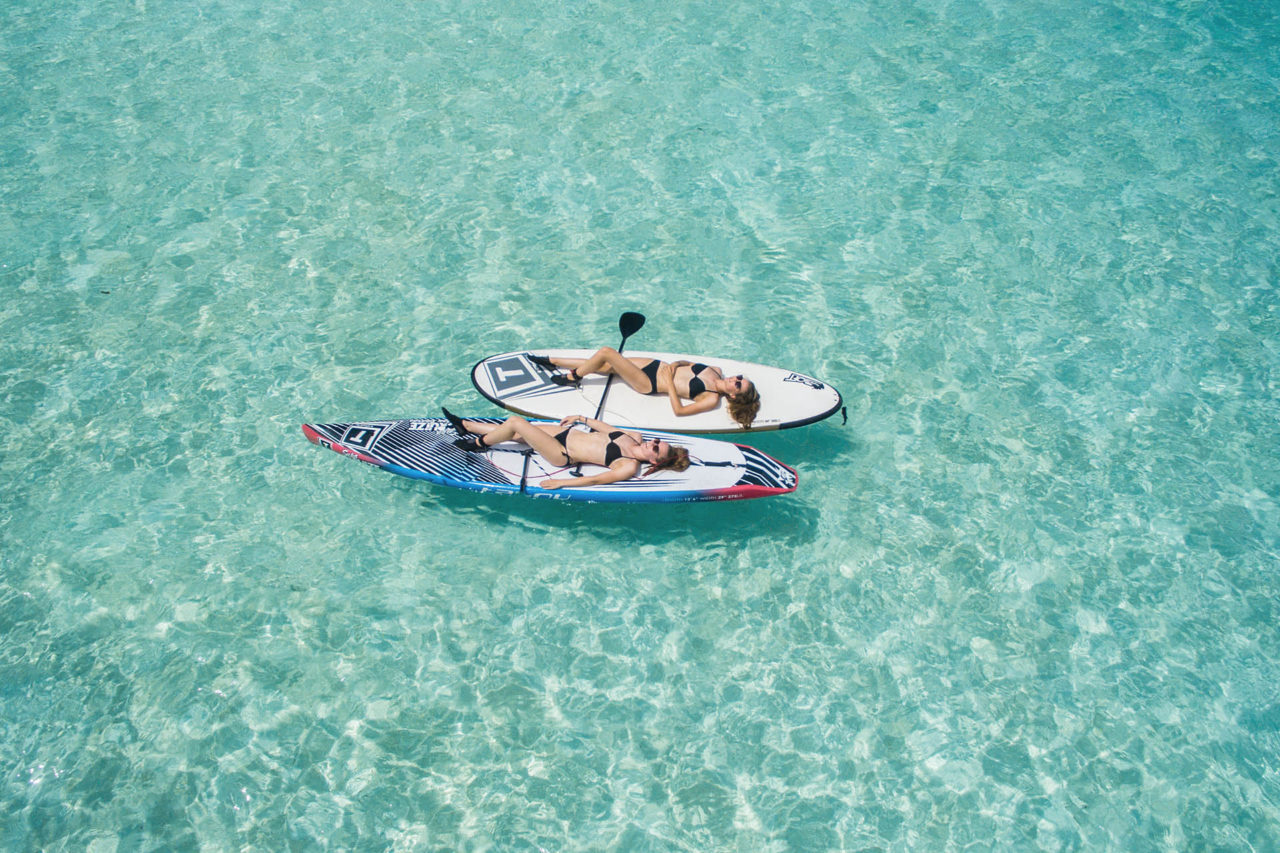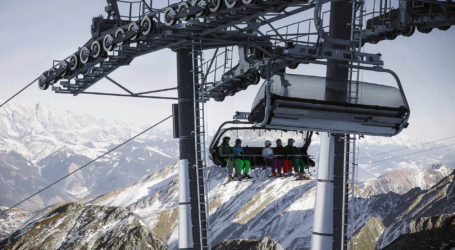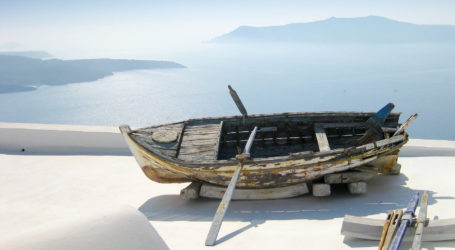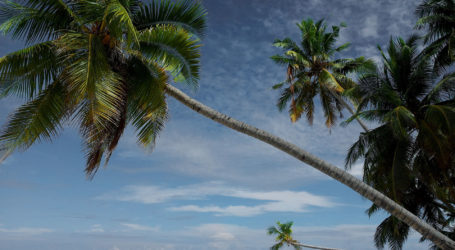The Maldives baring your sole
They’ve stolen my shoes. After 13 hours on a plane, a smiling man has placed them firmly into a bag labelled “No News, No Shoes” and pulled the drawstring tight. I am now barefoot in the Maldives and I feel distinctly uncomfortable. Some people have a thing about their thighs, stomach or numerous chins. I can’t stand my feet. They’re big and hairy, a combination that’s rarely attractive outside a zoo.
This winter-sun season, “Barefoot Luxury” are the new buzz-words. Every expensive beach holiday is being sold as “Shoeless Chic”, “Sand-In-Your-Toes Simplicity” or “Robinson Crusoe Relaxation”. There’s even a new company called Barefoot Luxury, whose brochure attempts to sum up the concept: “As our name implies, you may experience the true nature of the places you’re visiting by walking barefoot, but luxury will never be more than a step away.”
Initially, I’m sceptical. The simplicities of nature, with all mod cons? Renting a grass hut for £2,000 a week sounds like a good deal for the tour operator.
But there’s only one way to be sure. After much deliberation, I’ve decided to head to the Maldives, the birthplace of Barefoot Luxury, via its cousin “Robinson Crusoe Tourism”. This term was coined by the author of a Danish academic study, commissioned by the Maldivian government in 1971, which foresaw that in an ever-shrinking, stressed-out world, high-end customers would pay top dollar for isolation and natural surroundings. The resulting developments set the benchmark for environmentally friendly tourism. Resorts can only be built on deserted islands, and must be of a high standard, all with their own generators, desalination plants and produce deliveries, minimising any impact on the surroundings. It worked. In 1972 there were just 1,000 visitors to the islands. Thirty years later there were 380,000.
It’s not hard to see why. These 1,200 atoll islands, bisecting the centre of the Indian Ocean, look as though they have been created by a “Paint Your Perfect Paradise” computer program, with empty white shores, sprinkled with nodding coconut palms and surrounded by a blue neon sea. Each atoll (from the Maldivian word atolu) is surrounded by coral reefs, housing vast shoals of fish the colour of Smarties. The temperature rarely shifts from 30C during the day, 25C a night, and 27C in the sea.
I’m visiting two developments run by Soneva Resorts, founded by an Indian businessman, Sonu Shivdasani, and his Swedish wife, Eva, a former model. Their Maldives properties have introduced this “No News, No Shoes” policy in the past two months, whereby you are asked to remove your footwear before stepping on to the island. Back in London, it seemed like a gimmick. My scepticism grew when Marc Aeberhard, the manager of Soneva Fushi, informed me that the company was seeking to “redefine luxury”. “For us, luxury is about intangibles – space, tranquillity, and pure nature. We want people to ask ‘what day is it?’ In modern living, that is the ultimate luxury.”
Yet any cynicism vanishes the moment I step on to shore. The ivory sand is as fine as table salt and perfectly warm. By my side, a middle-aged Englishman stares at his feet as if he’s never seen them before. It must be said that they are not the prettiest in the world. I look at my hairy monsters with new-found affection.
Soneva Fushi is 60 miles by seaplane and boat north of the international airport in Male. The island is only a mile long and a third of a mile wide, and is thick with tropical trees and plants. It offers Maldivian-style grass huts – the size of my London flat – with lavish decor and sumptuous outdoor bathrooms.
Everything has been designed with bare feet in mind – from Indian sandstone to plantation teak and smooth pebbles in the outdoor showers, the floors are a joy to walk on. Outside each villa is a pine-needle hedgehog, against which you rub the bottoms of your feet to rid them of sand. The pleasure this gives is not printable – suffice to say it’s good for sole and soul.
It doesn’t take long to realise that bare feet are a great leveller. Everyone seems to have dressed down accordingly, with a pleasing lack of flashiness for an expensive resort. As Michael and Harriet Maunsell from Islington in London remark: “It relaxes you immediately. There’s no competition and you can forget your make-up and jewellery.”
Stress levels are lowered further by the fact that there is very little to do in the Maldives – outside the capital, there are no museums, monuments, ruins, cultural centres or shopping malls. Just the sea, sand, and endless sunshine. Oh, and a gastronomic restaurant and five-star spa.
One of the attractions of Soneva Fushi is its shady “jungle” – a stroll along the sandy paths through the tropical fiscus, coconut palms, cork wood, stone apple and hibiscus is the perfect antidote to sunburn on the beach. It feels coolly exotic, yet wholly safe – the paths are swept hourly, and lit at night, in a way, I find, that real jungle never is.
My energy levels have plummeted, but I do venture out one morning to go fishing. I have a dhoni boat to myself, where I eat mango and sip espresso on the rolling Indian Ocean, with an attendant poised, like a cricketer in the slips, to catch any fruit that might tumble off the table.
Barefoot luxury? More like “bare-cheek luxury”. But I’m not complaining. Especially when catching Maldivian fish seems to be as easy as getting a parking ticket in London.
My only complaint involves Soneva Fushi’s Me Dhuniye “Sunset” restaurant, which boasts an incongruous $120 degustation menu offering “Lasagna of job fish sashimi” and “Espresso of sweetcorn and truffle”, and an even more OTT wine list, on which many bottles cost $300 or more. The contrast between the resort’s natural ambience and this Monte Carlo snootiness couldn’t be more marked. When “luxury” overpowers the “barefoot” elements, the whole concept fails.
Fortunately, at my second destination, Soneva Gili, the chef Lionel Valla has sought to maintain a more happy alliance with the shoeless concept. Here, the cuisine is stylishly simple. At the Saturday-night buffet, my tuna curry is prepared by my own personal chef, after I’ve handpicked the ingredients.
Soneva Gili is just 15 minutes by speedboat from the international airport at Male, and attracts a more glitzy clientele. It’s famous for its seven “Crusoe” residences built in the water, which are accessible only by boat (recently patronised by Sven-Goran Eriksson and Gareth Gates, although not, I’m assured, together). These villas might well be marooned, but it’s unlikely Mr Crusoe would recognise them – the interiors are as luxury as barefoot can get before you’d have to put shoes on.
Arranged on two levels, these residences resemble grown-up Wendy Houses, with multiple decks and rooms boasting huge daybeds and wooden recliners, backgammon sets, DVDs, glass portholes so you can see stingrays and reef sharks beneath your feet, and vast wooden bathtubs built over the sea.
While it all appears “natural”, the attention to luxurious detail is extreme. There is beautiful Thai cutlery, Sri Lankan crockery and crisp cotton sheets. The teabags are made of muslin, hand-tied. I find the bamboo rubbish bins so lovely that I buy one.
On my last afternoon, I find myself at the spa, which also resides on stilts 200 yards out into the Indian Ocean. My feet do the talking. I end up with a reflexology massage. It is wonderfully soothing experience and I awake at the end with drool on my chin.
So is a naked-toed holiday worth the price of a small car? Could you not get a cheap flight to somewhere beachy, take off your shoes, find a wooden cabin and a man to cook you curry for a fraction of the cost?
Of course. But that defeats the point. Finding such perfect simplicity is hard work, requiring time and effort. The great thing about Barefoot Luxury is that it’s all done for you. To the highest standard.
As Harriet Maunsell, one of my fellow guests, puts it: “It’s as if they’re saying, leave it to us. We know what you need to relax.”
There is a reason such “barefoot” simplicity is expensive. In some ways it is an illusion. All this “naturalness” and “simplicity” is the result of a large team of staff (they outnumber guests two to one) and a costly creative vision. It’s akin to experiencing some great theatrical show, in which you never see the stage-hands, the rehearsal process, or the producers.
These playgrounds permit us to do things we haven’t done since childhood – not wearing shoes, riding a bike after dark, snorkelling in rock pools, or splashing about for hours in a gigantic bathtub.
This might be the essential attraction of the Barefoot Luxury concept. It returns us to a state of blissful childhood. The moment you take off your shoes and run barefoot in the sand is all the more pleasurable because it reminds you of the first time you did it as a child. And who are the cheerful white-clad staff, calling you by your first name and indulging your every whim, if not surrogate parents?
As if to symbolise this point, the visitors’ books at both resorts are full of happy little stick drawings, like primary school art exhibitions. While walking around the island of Soneva Fushi, I discover a lovingly crafted sandcastle with a home-made flag on top. It should be noted that there are no children staying here at the time.










